
This month’s Author Interview was supposed to be with Cate Berry, but she’s currently on a top-secret mission to infiltrate a cheese factory. (Word on the street is they have the finest gouda.) Luckily, we were able to snag an exclusive chat with the star of her latest book, Scorch, Hedgehog of Doom. Scorch is known for her ferocious ambition, prickly personality, and surprisingly soft heart. So, let’s see what this doomtastic hedgehog has to say about fame, friendship, and finding your inner awesomeness.
If you want more Cate, though, here are some options:
RVC: Scorch, you’re quite the literary sensation now. How does it feel to be the star of your own book, Scorch, Hedgehog of Doom? Are you enjoying the limelight, or are you plotting your next doomsy move to become even more famous?
SHOD: I’m so glad you asked! Interestingly, I’m enjoying taking time off my busy Villain Schedule to do some breezy press. So—let’s get into it.
RVC: Let’s!
SHOD: I ADORE being the star of my own book. While away studying the Art of the Perfect Doom and Anger 101, I took solace in some peaceful reading before bedtime. Some of my favorites included character-driven books like Olivia by Ian Falconer and Fancy Nancy by Jane O’Connor. So naturally when Page Street Kids approached me about a memoir, I pounced at the opportunity, and I’ve enjoyed every minute of the literary limelight.
In fact, next to wreaking havoc on classroom 402, I love shaking my apple slice on the red carpet.
RVC: Oh my! Now, you’ve got an interesting motto/tagline, Scorch. What does “doomsy” really mean to you? Is it about being scary, powerful, or something else entirely?
SHOD: Oh, that takes me back a bit, thanks for asking! As you know, I come from a very fierce lineage of doomsy ancestors (note: see page one of memoir) and so that role was firmly established at birth. Why, I remember Aunt Geraldine doing Doomsy Drills with me and 435,758 of my cousins until we could feel it from our whiskers to our claws! Ultimately, though, I’ve grown to understand the real meaning of being doomsy is different for every hedgehog. What’s truly important is knowing your authentic self.
RVC: The ending of your story leaves us wanting more. Are there any deleted scenes or scrapped ideas that you’d like to share with your fans? Perhaps a secret doomsy mission that didn’t make the cut?
SHOD: Tee hee! You sly dog. I guess you caught that this might not be the whole story after all! And yes, originally, we’d drafted a version where I “act” as if I’d changed at the end, but with a wink and a nod, and the readers understand I’m back to my doomsy ways the very next morning. No cutesy whatsoever!
RVC: You went through a lot of growth and self-discovery in this story. Did you always know you had a softer, “awww-dorable” side, or was that a surprise twist even for you?
SHOD: Honest to goodness, Ryan, it was a shocker. Especially to myself! I imagine it’s how the Beatles felt making “happy accidents” in the studio or during live shows. I do love the power of art that leaves room for spontaneity and self-discovery. And I’m not alone. Just last week I was stunned to receive a letter from Oprah congratulating me on being flexible and open to change within myself.
**And yes, the rumors are true, our agents are in negotiations about us co-authoring a book together. Stay tuned!
RVC: Awesome! Now this isn’t about the book, but I really want to know. If you could swap places with any other animal for a day, who would it be and what doomsy chaos would you unleash?
 SHOD: Oh! What a question! I’ve always wanted to get up to some trouble with the sneaky Big Fish from Jon Klassen’s book, This is Not My Hat. I love the understated villainy and deadpan delivery in his work. And I’ve always dreamed about collaborating with the Lion, Great White Shark. and Timber Wolf from Aaron Reynolds Carnivores picture book. I really admire those bad guys and their predatory work on, and off, the page.
SHOD: Oh! What a question! I’ve always wanted to get up to some trouble with the sneaky Big Fish from Jon Klassen’s book, This is Not My Hat. I love the understated villainy and deadpan delivery in his work. And I’ve always dreamed about collaborating with the Lion, Great White Shark. and Timber Wolf from Aaron Reynolds Carnivores picture book. I really admire those bad guys and their predatory work on, and off, the page.
RVC: Scorch, let’s shift gears a bit and talk more about your creative collaborator, Cate Berry. Did you two hit it off right away, or was it a bit prickly at first?
SHOD: Well, truthfully, we had our ups and downs. She’s a taskmaster! Do this, Scorch. Change that, Scorch. Try it this way, no I’ve changed my mind, blah blah blah. Honestly, my paws took a beating during revisions and I’m seeing a therapist now which is really helping. But whew! Think twice before signing on with that one, class pets. And prebook a spa day with your advance once you reach copy edits. Don’t take my word for it. Just ask Penguin and Tiny Shrimp from her first book, now happily enjoying early retirement after all their hard work.
RVC: Cate’s been described as a bit of a goofball. Did she make you laugh during the writing process? Any favorite behind-the-scenes moments you can share with us?
SHOD: We shared a bit of a laugh refining my “moves” for the book. Seeing her act out a paw punch is one for the memory book!
RVC: We know Cate enjoys writing dialogue. Does she ever talk to you, Scorch, while writing your lines? Does she try out different doomsy voices?
SHOD: No. But her Face of Doom is incomparable. She puts mine to shame, Ryan!
 RVC: Cate has written other books besides yours. Are you jealous of those other characters, or do you secretly root for them to be just as doomsy and awesome as you are?
RVC: Cate has written other books besides yours. Are you jealous of those other characters, or do you secretly root for them to be just as doomsy and awesome as you are?
SHOD: I vacation with the flock from her book Chicken Break every summer. Oh, we have some laughs! But those sneaky devils only show half of their trickster ways in the book. I’m hoping one day they’ll “break out” even more.
RVC: When Cate asks, which book of hers do you say is your favorite?
SHOD: I never tell her this because we really must be careful around our authors. It’s so easy for them to get a big head. But yes, I have a soft spot for Thank You, Teacher. Classroom solidarity and all that.
RVC: Which of Cate’s books is REALLY your favorite?
 SHOD: Okay, you got me. Penguin & Tiny Shrimp Don’t Do Bedtime! hits me where I live. They are so bad! And the illustrator Charles Santoso is no slouch with those expressions.
SHOD: Okay, you got me. Penguin & Tiny Shrimp Don’t Do Bedtime! hits me where I live. They are so bad! And the illustrator Charles Santoso is no slouch with those expressions.
RVC: We hear Cate is a teacher. Does she ever bring her students’ ideas into the books she writes?
SHOD: Gasp! One writer is all I can take. If she does, and now that I think about it, she probably does, I’d rather not know. It would only lead to more revisions!
RVC: Have you ever inspired any real-life classroom chaos?
SHOD: Oh, I’ll never tell. J Let’s just say my friend Speedy the Hamster made quite the impression on the first day of second grade!
RVC: Cate has mentioned she’s a bit of a homebody who loves a quiet beach vacation. If you could design the perfect doomsy vacation for her, where would you take her and what would you do?
SHOD: Fabulous question, and I’ve been waiting for someone to ask me this, so thank you. I think I’d take Cate on a cruise. Being trapped on a boat, deep water encircling us, mixed with her paralyzing fear of sharks, would be the perfect set up for little old me to “shut off the engines” for a significant amount of time. It would really help Cate get in touch with her rage. That could only be beneficial to more authentic doomsy-ness in her day-to-day routine.
RVC: Cate’s been working as an Editorial Assistant with me at Bushel & Peck Books. Now, it’s just you and me here, Scorch, so you can tell me the honest-to-doomsy truth. How’s it going for her in that role? What has she said was her favorite thing(s) to do?
SHOD: Well, I hate to divulge secrets, but she does have a mild obsession with grammar and punctuation. I think she’s positively giddy getting to edit all those extra commas and quotation marks, etc. It’s thrilling to see Cate finally have an outlet for this minutia. Saves time for the rest of us, ammiright?
RVC: Abso-doomsy-lutely! Now, Cate has mentioned the importance of finding joy in the creative process. What’s something she does to stay inspired and keep the doomtastic ideas flowing?
SHOD: It’s embarrassing how much she loves singing in the shower! Did you know she keeps one of those Wet Notes whiteboards attached to the shower wall? She says her best ideas come when you least expect it, so you have to be ready. Beats me. Just proves how ridiculous humans are. Why not run on the exercise wheel like the rest of us?
RVC: What’s Cate’s biggest pet peeve when it comes to writing? Does she hate typos, slow internet, or maybe overly cheerful characters who don’t appreciate a good dose of doom?
SHOD: That’s a tough one. But if I had to guess, I’d say writers settling for their first idea. She’s always going on and on about pushing yourself to find the “freshest way to tell your story.” Whatevs that means. Is she a baker or a writer?
RVC: Cate has talked about the ups and downs of the publishing world. What’s one thing you’ve learned from her about resilience and never giving up on your doomtastic dreams?
SHOD: Rage is a huge motivator, for me personally. But Cate is all about the long game. I hear her talk a lot about taking a Bird’s Eye View of her career. That and not taking any critique or rejection to heart. I’ve also heard her talk about how helpful it’s been doing editing work with you, getting to see how much editors really want a manuscript that will blow them away. It’s easy to forget that “behind the gatekeeper curtain” everyone really wants you to succeed.
RVC: If you could give Cate one piece of advice about writing for children, what would it be? Would you encourage her to write even doomsier stories, or perhaps explore a different kind of adventure?
SHOD: I am a fan of her rhyme, even though it makes her rather cranky while she’s revising. But you know me. Embrace the doom!
RVC: Finally, Scorch, what advice would you give to other hedgehogs (or humans) who are struggling to find their place in the world? Should they embrace their inner doom, or find a different path to awesomeness?
SHOD: You can never go wrong with authenticity, my friend. I’m all about accepting ALL parts of yourself. Even the cute ones (but let’s keep that off the record).
RVC: Alrighty, my prickly pal. It’s now time for the LIGHTNING ROUND OF DOOM(SY)! Hamster-quick questions followed by hedgehog-zoomy answers please, and since you’ve been sharper than a cactus needle so far, we’ll do a jumbo-sized version of the LIGHTNING ROUND. Scorch, are YOU READY?
SHOD: You betcha!
RVC: What’s your go-to karaōke song?
SHOD: Hit Me with Your Best Shot by Pat Benatar. I slay on that.
RVC: What’s your secret talent that no one knows about (besides being doomsy, of course)?
SHOD: I am obsessed with the New York Times cooking app.
RVC: What’s the most embarrassing thing Cate Berry has ever done in front of you?
SHOD: How could I choose?
RVC: What’s a question nobody ever asks you, but you wish they would?
SHOD: Do you ever let your guard down?
RVC: What’s the answer?
SHOD: NO!
RVC: If you could have any celebrity narrate the audiobook version of Scorch, Hedgehog of Doom, who would it be?
 SHOD: Dame Judi Dench, of course.
SHOD: Dame Judi Dench, of course.
RVC: If you could create your own doomsy holiday, what would it be called and how would it be celebrated?
SHOD: I think it’s high time someone retired Phil from Groundhog Day and replaced it with me and Rage Against February Day.
RVC: What word does Cate always mispell, mispel, misspel, get wrong?
SHOD: Blonde. I mean, blond.
RVC: Who does Cate believe sets the bar for picture book rhyming?
 SHOD: Liz Garton Scanlon.
SHOD: Liz Garton Scanlon.
RVC: Who is YOUR favorite picture book rhymer?
SHOD: Grrr. I hate to agree. But Liz Garton Scanlon.
RVC: Sum up Cate’s approach to writing picture books in a hedgehog-worthy haiku.
SHOD: Revise and revise,
Until you want to pass out—
Oh mercy, Ryan, I’m no good at poetry. Let’s set something on fire!
RVC: It’s been a quilltastic time, Scorch. Keep spreading the doom and delight! Remember, the world needs a little more “awww” and a lot more you.




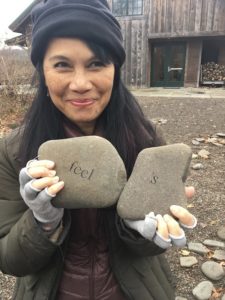 Edna Cabcabin Moran is an author/illustrator, multi-disciplined artist, educator, and advocate for youth voices and diversity in publishing. A Filipina-American born to immigrants and raised in a military family,
Edna Cabcabin Moran is an author/illustrator, multi-disciplined artist, educator, and advocate for youth voices and diversity in publishing. A Filipina-American born to immigrants and raised in a military family, 


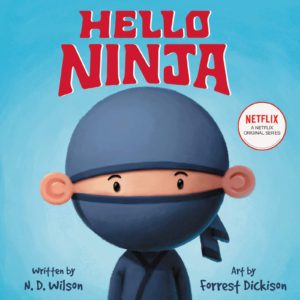



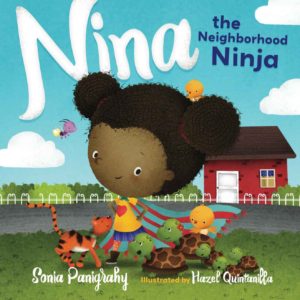





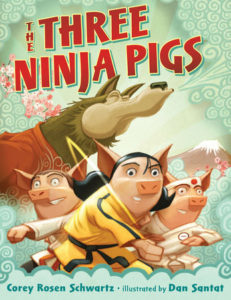



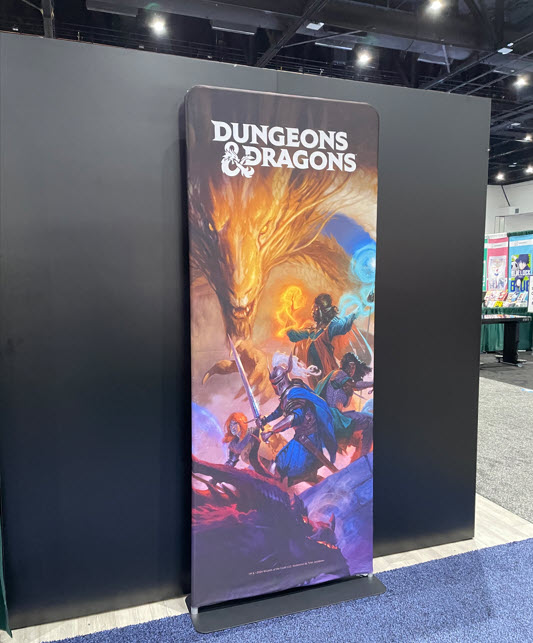

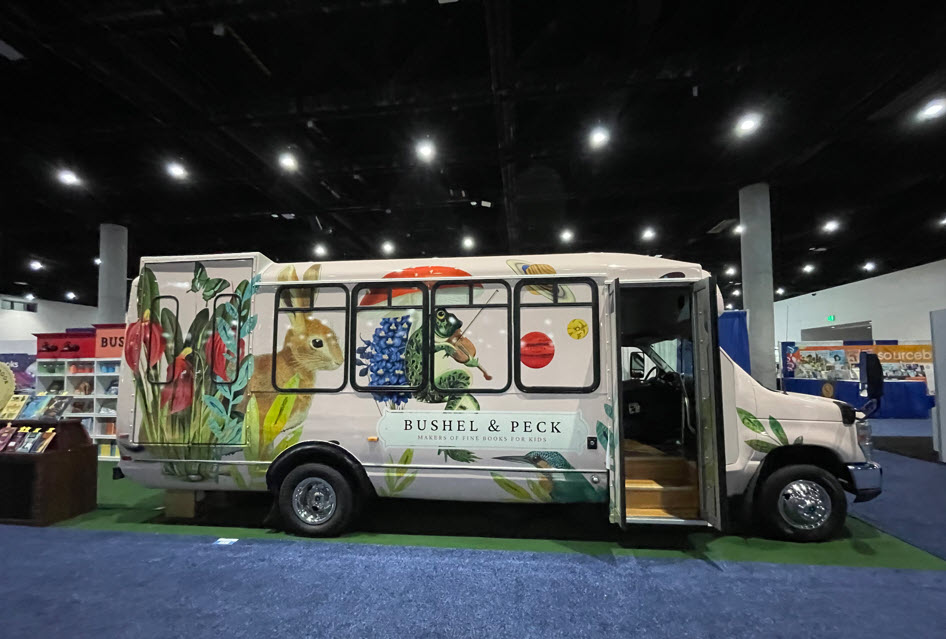
















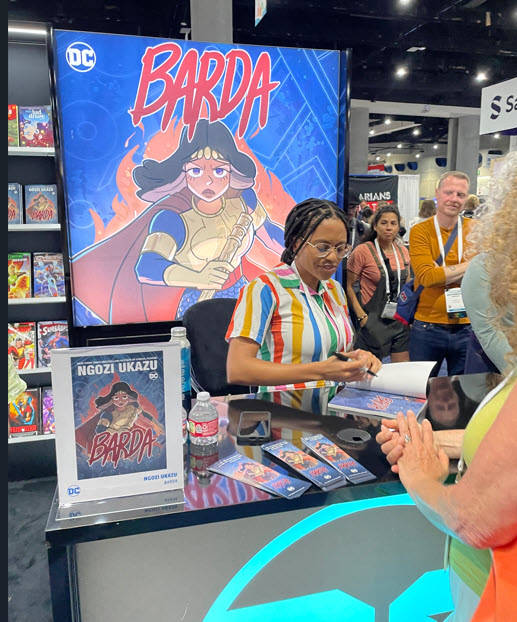






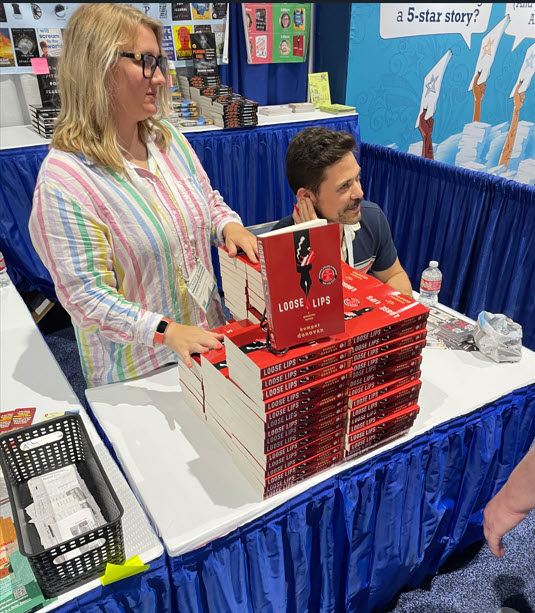
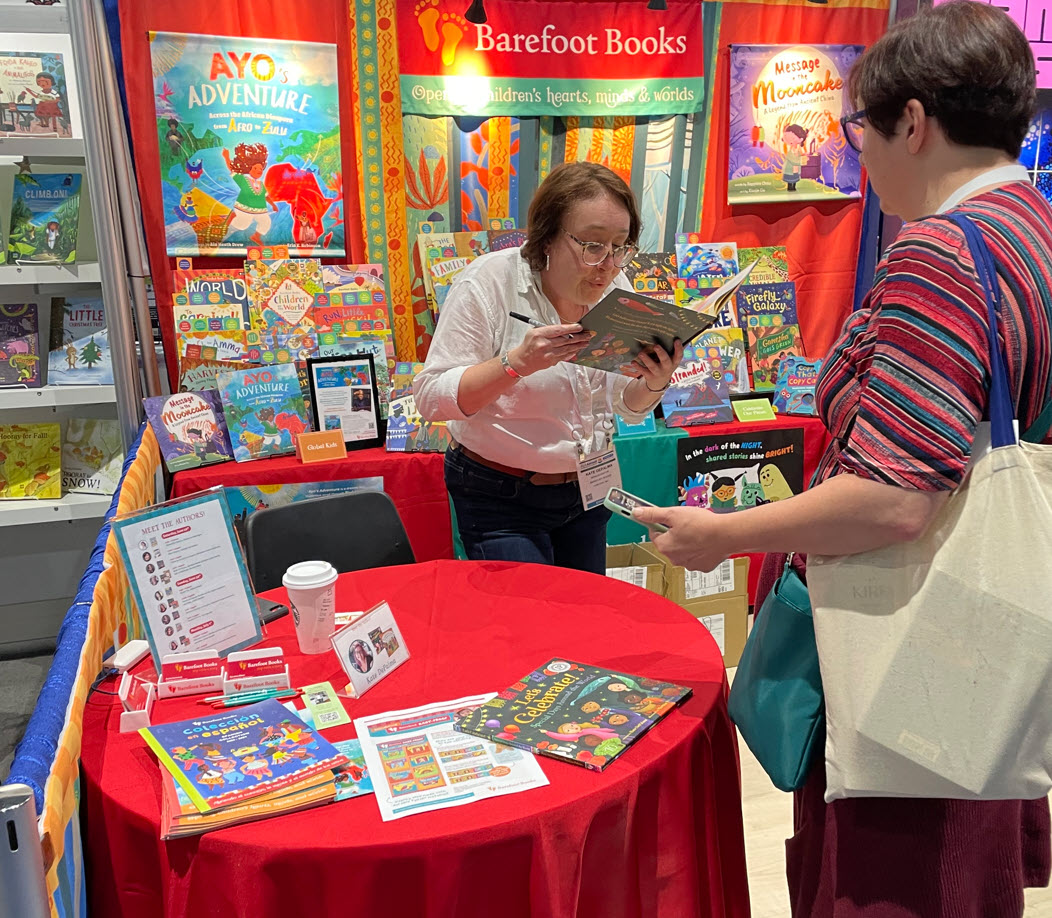
















 This month’s interview is with Katie Mazeika, an award-winning author and illustrator “who can’t imagine a better job than making books.” She’s especially passion about highlighting disabled voices in her work and her work as a creator and advocate creates a space to openly discuss disability and neurodiversity.
This month’s interview is with Katie Mazeika, an award-winning author and illustrator “who can’t imagine a better job than making books.” She’s especially passion about highlighting disabled voices in her work and her work as a creator and advocate creates a space to openly discuss disability and neurodiversity.



